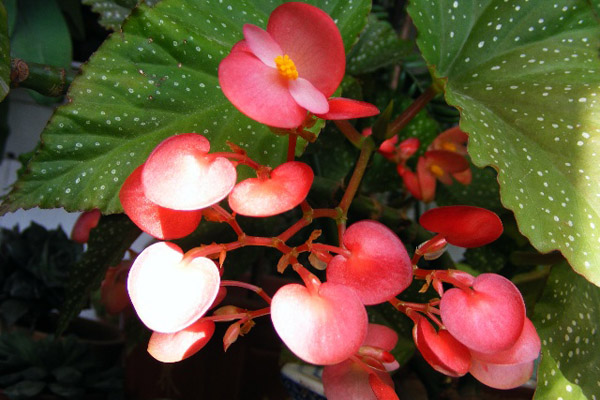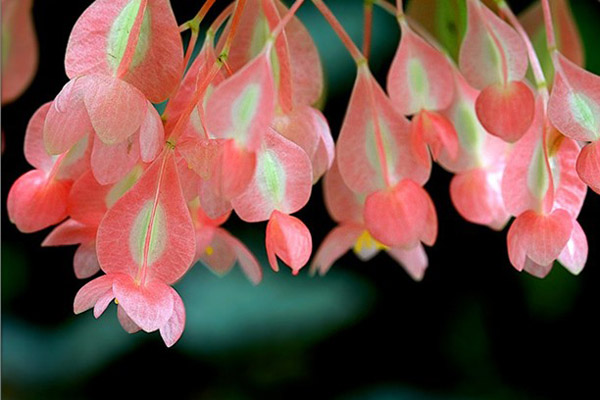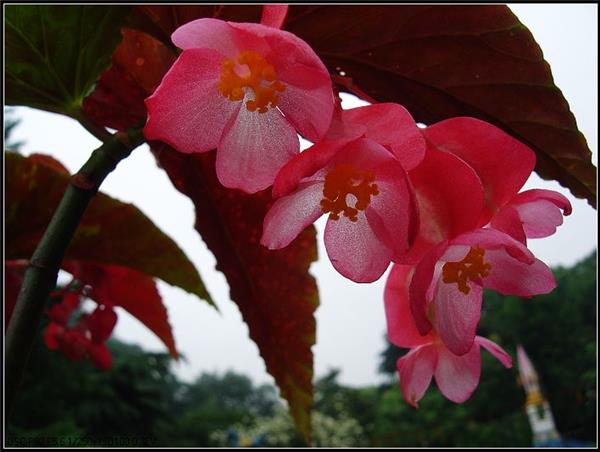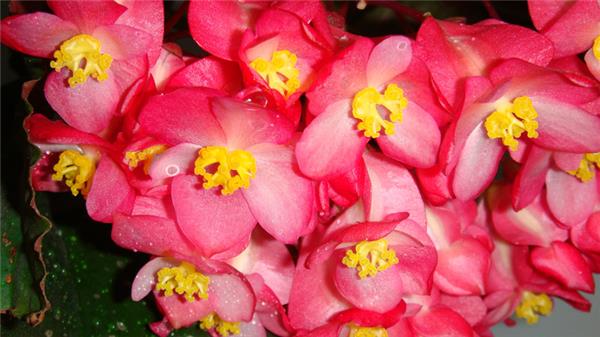What are the matters needing attention in the culture of beautiful flower bamboo begonia
Indoor pot culture of bamboo crabapple needs to pay attention to more, but most of them are some details, mainly in order to ensure the ornamental effect and value of its plants.

Habits: bamboo crabapple has good shade tolerance and likes a warm and humid environment. Requires good drainage of fertile soil, and more cold-resistant, winter indoor about 5 ℃, still fresh green as usual. It has strong habits and is very suitable for family cultivation.
Insert: combine basin turning and pruning from May to June. Cut the branches with strong growth, 10-15 cm long and 2-3 nodes as cuttings, and retain 2-3 leaves on top. Because the leaves are large, they can cut off the 1 inch 2-1 inch 3 of the leaves, and insert them into the substrate after the wound dries. Under the temperature of 20-24 degrees and semi-overcast conditions, it can take root in 25-30 days.
Fertilization: fertilizer is a necessary element for plant growth. Fertilization should be carried out by hoeing when the basin soil is dry. Watering after fertilization can facilitate plant absorption. Do not apply big fertilizer when the stems and leaves are not flourishing or when the pots are newly turned. During the peak growth period in spring, rarefied liquid fertilizer is applied every 10 to 15 days. Phosphorus and potassium fertilizer should be applied during the bud period to promote bud pregnancy and flowering. In the high temperature season in summer, the plant stops growing and fertilization should be reduced. Fertilization is suspended during flowering and winter.

Illumination: bamboo crabapple likes sufficient scattered light and grows best at 410 lux. If the light is too strong in high temperature in summer, it is easy to cause the focal tip and edge of the leaves, and the leaves turn yellow and even fall leaves. From May to September, shade should be provided to cover 50% of the light, or the plant should be placed in a place with sufficient scattered light. Other times need to be given sufficient sunshine, spring and autumn when sufficient light is easy to form flower buds. When the light is insufficient, the number of leaves and flowers will be reduced and the plants will grow too long, and too little light will also lead to fallen leaves.
Pruning: strengthen plant pruning to help maintain good plant shape. For the plant that has been growing for many years, or the plant grows too high, or the leaves of the lower part of the stem fall off, resulting in the unattractive shape of the plant and affecting the ornamental effect, it can be pruned in combination with changing pots in spring to facilitate the plant to germinate new branches and produce more bright flowers.
Humidity: begonia grows naturally under forests or valleys with high humidity. The relative humidity of the air should not be less than 50%, and it is best to maintain 65% and 70%. And its stems and leaves are tender and succulent, so in the growth period, in addition to the need to provide a humid ecological environment, but also should provide sufficient water, but avoid too wet. Watering still needs to grasp the principle of "no dry, no watering". Too much drought and dampness will affect the absorption of plant roots and cause defoliation, especially at low temperatures in winter, otherwise it will easily lead to rotten roots and leaves.

Temperature: bamboo crabapple likes warmth, and the most suitable temperature for growth is 15-18 ℃. Although it is one of the more hardy species of begonia, its leaves are easy to fall off when it is below 5 ℃. Bamboo crabapple is afraid of heat, the temperature is more than 30 ℃, the plant growth is slow and semi-dormant, slightly improper maintenance, but also easy to produce deciduous leaves.
Turn the basin: turn the basin once a year, preferably after spring or September. The matrix can be prepared with rotten leaf soil, peat soil, garden soil, rice chaff ash or perlite.
Diseases and insect pests: there are common diseases and insect pests such as powdery mildew, blight, thrips and red spiders. The principle of giving priority to prevention and comprehensive prevention should be fully implemented. In case of hot and humid weather, bamboo begonia is prone to diseases and insect pests. For the prevention and control of diseases and insect pests, first, it is necessary to strengthen ventilation and light transmission, basin soil can not be wet, let alone water in the basin. Second, fungicides such as thiophanate methyl and carbendazim are sprayed every semimonthly to prevent the occurrence of diseases. If red spider harm is found, triclofenac 1500 times solution can be sprayed.

The matters mentioned above must not be ignored in the process of culturing bamboo crabapple. Only by taking good care of them carefully will they return with their beautiful flowers and healthy plants to enhance the beauty of the room.
- Prev

Matters needing attention in Culture and embodiment of Medicinal value of Lampstand Tree
Matters needing attention in Culture and embodiment of Medicinal value of Lampstand Tree
- Next

How to cultivate Robinia pseudoacacia and how to control its diseases and insect pests
How to cultivate Robinia pseudoacacia and how to control its diseases and insect pests
Related
- Wuhan Hospital Iron Tree Blooming Result Was Instantly Frightened by the Gardener Master
- Which variety of camellia is the most fragrant and best? Which one do you like best?
- What is the small blue coat, the breeding methods and matters needing attention of the succulent plant
- Dormancy time and maintenance management of succulent plants during dormancy
- Minas succulent how to raise, Minas succulent plant pictures
- What are the varieties of winter succulent plants
- How to raise succulent plants in twelve rolls? let's take a look at some experience of breeding twelve rolls.
- Attention should be paid to water control for succulent plants during dormant period (winter and summer)
- Watering experience of twelve rolls of succulent plants
- Techniques for fertilizing succulent plants. An article will let you know how to fertilize succulent plants.

